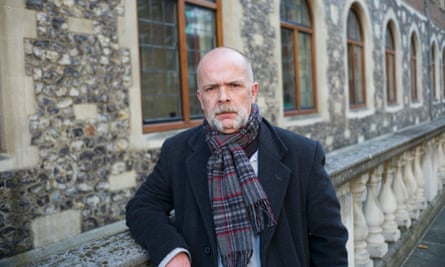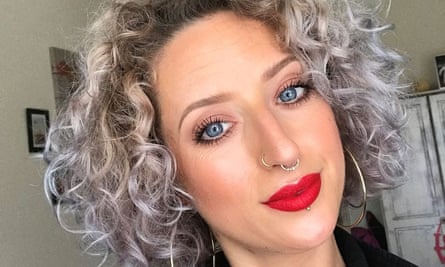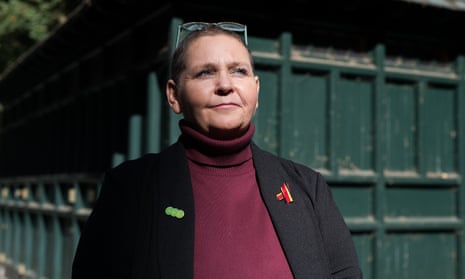Every morning a bell was rung to announce the start of proceedings. But it may just as well have been tolling for the dead. At least 4,689 haemophiliacs were given contaminated blood products in the 1970s and 1980s, and contracted HIV and/or hepatitis C. More than half have since died. Then there are the thousands infected by blood transfusions.
On the steps of Church House, next to Westminster Abbey, groups of gnarled middle-aged men stood like war veterans. And in a way they were. For decades, they fought the government over the right to a UK-wide public inquiry. This scandal was by no means unique to Britain. In America it was known as the Haemophilia Holocaust and the companies that supplied infected products paid out millions in out-of-court settlements. In countries such as France and Japan, politicians and drug company bosses were convicted of negligence and even manslaughter. In Britain, nobody has been held responsible. In many other countries, including Ireland, those affected were compensated for loss of loved ones, income, quality of life. Here victims were forced to beg for handouts to keep going.
In their smart red, yellow and black ties, the haemophiliacs could have been setting off for a day’s cricket at Lord’s. But these colours were symbolic – red for HIV, yellow for hepatitis, black for death. Many hobbled with sticks. Some were in wheelchairs. Their teeth were discoloured, chipped, or simply missing – the result of a bust immune system or avoiding the dental care that could lead to fatal bleeds. They were from all walks of life.
Many of the core participants were sceptical, or worse. There have already been two inquiries – both dismissed as whitewashes. This promised to be different – larger in scope. Already 100,000 documents have been collated, with more expected over the next two years.
There were myriad questions. Why were patients given contaminated blood? In the case of the haemophiliacs, why was dodgy pooled blood bought from American prisons on the cheap? Why did the NHS continue to buy it when even America had stopped buying from the prisons? Why were patients not told of the risks? Why did it take so long to develop safer heat-treated products? Why were patients told they had contracted these killer viruses because they were promiscuous, injected drugs or had a drink problem (hepatitis C destroys the liver) rather than the truth – that they had been drip-fed contaminated blood?
The three-day opening to the inquiry began with a commemoration bookended by two pertinent songs – Emeli Sandé’s Read All About It, and The Sound of Silence sung by the London Contemporary Voices choir. This is the scandal that we are finally getting to read about; the scandal that was silenced by the medical profession, the political establishment and ultimately the victims themselves, such was their shame.
Q&AWhat is the NHS infected blood scandal?
Show
The infected blood inquiry will investigate how thousands of people with the blood-clotting disorder haemophilia were given blood products by the NHS which were contaminated with the HIV virus and hepatitis C.
At least 4,689 British haemophiliacs are thought to have been treated with infected blood in the 1970s and 80s. So far, half have died.
The inquiry will try to figure out the exact number of people who have been infected, examine the impact the infection had on people’s lives, investigate whether there was any attempts to conceal details of what happened, and identify any individual responsibilities as well as systemic failures.
On the huge overhead screen in the Assembly Hall, talking heads spoke of their experience. “When they told me what they’d done to me, I stood at a motorway bridge to jump off it.” “Every time I shut my eyes I was just looking at a coffin.” And these were the lucky ones; the survivors. Stories overlapped, patterns appeared, as the weight of the horror bore down on us.
Poignantly, the talking heads remained nameless. They weren’t here as individuals, they were totems – Everyman and Everywoman of the contaminated blood scandal. Next April when the inquiry proper starts we will hear individual stories in depth.
This was the purest form of verbatim theatre – core participants in the stalls, journalists in the circle. On stage the retired judge Sir Brian Langstaff, the inquiry chair, sat at the side while statement after statement was read out.

In his opening statement Langstaff said criminal trials could follow the inquiry. On the second day we heard from the lawyers. A few participants represented themselves. The first, Della Hirsch, whose 35-year-old son Nick died of hepatitis C, accused the government of a “conspiracy of silence”. The second, Michelle Tolley, caught hepatitis C following a blood transfusion after she had given birth. She only discovered she was infected three years ago, 28 years after the event. “I have been given a death sentence without committing a crime,” she said. Langstaff hugged both women after they had spoken.
From then on he was greeted with a standing ovation whenever he entered the room. Even the lawyers for the health service and blood transfusion services were applauded after their statements. But this applause was nuanced; applause that said: we appreciate your promises, now we will hold you to them.
One lunchtime, three infected haemophiliacs stood on the steps discussing their shared past at Treloar College. They were sent to this special school in Hampshire, to be cared for. Of 89 haemophiliac children who attended Treloar from 1975 onwards, all were infected with hepatitis B and C, and 64 contracted HIV. Only 16 are thought to be alive today.
Ade Goodyear, 47, said the doctors were heartbroken when they knew what they had done to the children. “My doctor took me and a lad called Sean to his home one day, and he said, ‘Boys we’ve messed up’. He was in tears. We were 12 and I didn’t know what he meant.” Goodyear looked at the others. “Do you remember Sean? He was quite gobby, and said, ‘Oh right, are we going to die then?’ The doctor said, ‘We’ll do our best for you.’ Sean’s gone now.” Two of Goodyear’s three haemophiliac brothers died after receiving contaminated Factor VIII blood products.
The inquiry launched 21 years to the day since Goodyear made a promise to his dying brother Jason. “Three days before he died, Jase said to me: ‘You’ve got to get the bastards who did this to us. Please bruv, make sure.’ I said to him: ‘If I make it through I will, I truly will.’”
Julian Gatrick was surprised at the impact the commemoration had on him. “I thought I’d dealt with all the sorrow and grief over the boys who have died, but there was one little picture of the Treloar boys that hit me like a brick. I couldn’t stop crying.”
Lee Stay was told he had five years to live after being diagnosed with Aids and hepatitis C at Treloar. He survived against the odds, but spoke about the toll it has taken on his life. “I didn’t want to know about relationships after that,” he said. “It took me till I was almost 40 to have a relationship. We got together in 2006, and married in 2008.” Stay had a liver transplant for his cirrhosis. The operation left him weak, and soon after he lost his job and his marriage collapsed.

Until recently, he only told his closest friends that he was HIV positive and had hepatitis C. “It’s the stigma. The fact that the blood was infected; people jump to conclusions.”
Goodyear’s friend Ros Cooper joined the Treloar trio. “I’m a bleeder,” she said, by way of introduction. “A funny bleeder.” And she is. Warm, witty and remarkably lacking in bitterness. At six months old, Cooper was diagnosed with Von Willebrand’s disease, another blood-clotting disorder. Cooper contracted hepatitis C after receiving contaminated blood products.
They talked about what they expected from the inquiry. “I had zero expectation,” Gatrick said. “You’ve got to set the bar low.”
“It’s about managing your own sanity, not just your expectations,” Cooper said. “It’s weird. The inquiry’s everything we want, which makes me suspicious. But I don’t want to be suspicious. I want to put my faith in it…” She paused. “But I’m scared.’’
By the age of seven, Bruce Norval had all the symptoms of hepatitis C. “Night sweats, difficulty in concentration, and by time I was 14 I went from top of the class to bottom. I couldn’t focus any more.” His knees are trashed, his lower back causes him anguish and many of his teeth are missing. But Norval, a former Motorhead roadie, said the state of his teeth is nothing to do with his immune system or a failure to brush them. “I got a baseball bat in the face many years ago. I lived in a shared house and one of the guys opened a letter addressed to me. It was my HIV test and it was negative. But he decided that if I needed testing for HIV I wasn’t being honest, I must have it, so he set about me with the baseball bat.”
In a room reserved for campaign groups, families paid tribute to loved ones. The mood was less conciliatory than in the main hall. Opposite a painting of archbishop of Canterbury Cosmo Gordon Lang is a banner with the words “MURDERED” printed across it, and a roll call of victims. A photograph of Colin Smith, who weighed 13lb when he died of Aids at seven, is accompanied by a poem from his mother Janet:
I know I’ll see you darling,
I know you’ll hear me pray,
And with God’s help, my little boy,
We’ll meet again some day.
God bless you my baby.
Mummy
The Smith family moved from their home in Newport after AIDS was painted across the side of the house. His parents recently discovered Colin had been given the deadly Factor VIII clotting product unnecessarily. They believe their son was used as a guinea pig.

On the third and final day tensions mounted when a 1996 letter from the then prime minister John Major was read out. Major refused to compensate victims, saying they had been given “the best possible treatment available at the time” and suggested they “might be able to benefit from lottery grants”. The room erupted with boos and cries of “Shame!”
Later that afternoon there was another surprise when Eleanor Gray QC, on behalf of the Department of Health and Social Care, made her opening statement. It was not the fact that she apologised to the victims (David Cameron had already apologised when prime minister in 2015), it was the fact that she said she had heard “many reminders of what may, at worst, have been a cover-up or at best a lack of candour about past events”.
Of equal note, in his concluding remarks, Sir Brian, whose language had been neutral till this point, said: “These three days have made this scandal visible, really visible in a way that I was told, when we consulted on the terms of reference, you felt it had not been before.” One could hear the collective intake of breath when he called it a scandal.
On her way out, Lauren Palmer looked pleased. Palmer’s father was a haemophiliac who received contaminated blood and infected her mother. In 1994, at the age of nine, she lost both her parents within weeks of each other. “I’ve been slowly convinced. I had a level of scepticism till Brian’s last statement.” Brian? She laughed. “Yeah Brian, he’s a pal!” What did she call him before this week? “Sir Brian Langstaff? The chair? I do feel more confident than I did.”
Early Friday evening a group of distinctive middle-aged men hobbled to a pub in Westminster. They said they still had doubts about whether the government would provide sufficient financial support for their legal teams, whether politicians really would be forced to give evidence, and whether they would even be alive for the final report. But while they had the strength all were determined to raise a glass to the opening of a public inquiry they were convinced they would never see.
